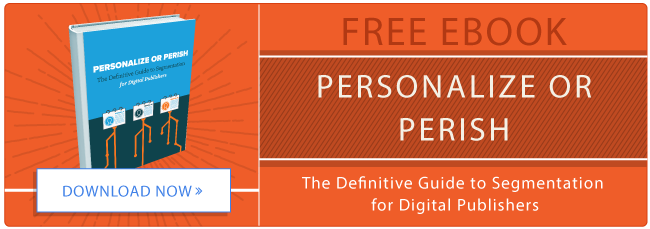Publishing revenues may be moving online, but that doesn't mean print is dead.
In fact, parts of the media industry are moving in the opposite direction and investing in print as complements to their core brands and user experiences. While magazines, on the whole, may be waning in sales and migrating to a digital environment, other types of products continue to remain popular among readers such as textbooks, case studies, companion books, and niche magazines. And as the American Marketing Association points out, even circulation-based magazines are still popular: rather than reaching a broad scale audience, however, it’s the most engaged buyers who are continuing to read them.
The bottom line is that print is an untapped revenue opportunity for today’s media companies. Instead of aiming to reach a mass market audience, however, publishers need to double down on initiatives that introduce new and loved media products to the market. Here’s how publishers can use their digital environments to promote products that readers can engage with offline.
Use Online Data to Come Up With Print Product Ideas
One of the biggest assets available to media companies is data. In building an audience, publishers have access to a wealth of insight into their readers’ content consumption patterns. Often, publishers use this information to build more effective advertising products and to generate more web traffic.
But the industry very well understands that display ad revenue is on the decline, which means that ‘more of the same’ is far from sustainable as a long-term business strategy.
To remain popular among their readers and prepare themselves for a radically different media ecosystem, media companies need to think bigger in bringing new products to market. The good news? Publishers aren’t startups: they’re established companies with existing audiences—a portion of whom will become customers.
Here are some ways that publishers can use data to come up with product ideas:
- Examine popular content, analyze themes, and come up with potential content-based products.
- Administer a website-wide sample survey to ask readers what types of products or premium content that they would like to purchase.
- Build a product as an experiment and see how it performs as a one-off by running Facebook experiments and promoting it site-wide.
Use Inbound Marketing to Build a Scalable, Repeatable Conversion Funnel
Even for media companies with large audiences, products won’t sell themselves. Marketers at publishing brands need to pay careful attention to their readers’ decision cycles and craft campaigns that deliver the right message to the right audiences at the right time.
The rationale makes sense: when readers visit a website for the first time through search or social, they’re in the mood to learn—not to make a purchase necessarily. They may need some time to learn about a particular product and become convinced that it is the right fit for their needs. That’s where the inbound methodology enters your marketing equation.
HubSpot developed this methodology in 2006, as a way to help translate relationship-building patterns from an offline environment into the digital world. Instead of archaic ‘outbound’ marketing methods of buying ads, buying email lists, and praying for leads, inbound focuses on creating quality content that pulls audiences where they naturally want to be. By aligning website content with the products that audiences want to purchase, whether online or offline, media companies can build a more consistent sales pipeline that you can monitor and optimize over time.
Here are some steps that media companies can take, using inbound, to push more audiences to print products:
- Build awareness of print products through social media accounts that engaged readers are likely to be following and monitoring consistently. Ensure that this type of promotion encompasses a balance of valuable educational content and product pitches. Here’s a guide to creating a social media strategy that can help.
- Offer gated sneak peaks to print products so that readers can preview a piece of content before deciding to make a purchase. Create a drip campaign with partial content so that audiences can take some time, over the course of reading several emails, to make a purchase decision. Here’s a guide to creating an effective lead generation strategy from the ground up.
- Include smart content with a clear call to action (CTA) that makes readers on-site aware of products that are available for purchase. Tailor these resources to specific audience segments based on prior segmentation or persona work that took place during product development processes. Align your content to the right audiences to ensure relevancy and higher conversion rates, as a result. Provide sneak previews and allow audiences to ‘try before they buy’ by signing up for an email list. Here’s a guide to smart content to help you get started.
Final Thoughts
Media companies are in a prime position to develop content products, and print is a valuable, underutilized channel. If you think print is dead, think again: digital audiences are still craving books, resources, and information to help them make the most out of their time offline. Figure out what they need, and build it. Develop a marketing strategy that allows you to do what you do best--building an audience--to craft a new line of business.
from HubSpot Marketing Blog http://blog.hubspot.com/marketing/how-publishers-can-use-digital-to-push-print
Via http://blog.hubspot.com/marketing/how-publishers-can-use-digital-to-push-print


No comments:
Post a Comment